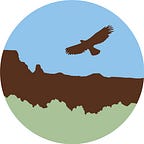A Summer of Speaking Up for Oregon’s Desert Public Lands
More than 6,000 people commented on the Bureau of Land Management’s Draft Resource Management Plan for Southeastern Oregon
This summer, more than 6,000 public lands enthusiasts of all kinds took advantage of a 90-day public comment period to send the Bureau of Land Management feedback on their Draft Southeastern Oregon Resource Management Plan Amendment.
This resource management plan covers 4.6 million acres in the Owyhee Canyonlands, and will guide how these landscapes area managed for decades to come. As the Capitol Press recently reported, the bureau’s Vale District Manager Don Gonzalez.has stated that the final Environmental Impact Statement could be released by February 2020.
Oregon Natural Desert Association (ONDA), a conservation group that has made a long-term commitment to protecting and restoring these lands in southeastern Oregon, was alarmed to see what the BLM had selected as their preferred alternative out of the five management alternatives presented in the plan.
“While the BLM had identified 1.2 million acres of wilderness quality land in this planning area, their preferred alternative did not propose to manage any of these remarkable lands to retain their wild character. Not one single acre,” explained Ryan Houston, Executive Director for Oregon Natural Desert Association.
The federal agencies that manage these landscapes must consider all of the feedback they receive during public comment periods.
“The last time the public had a chance to weigh in, in 2001, the BLM received hundreds of comments. Now, with more than 6,000 comments pouring in from people who know, use, and love these public lands, the BLM can’t ignore the fact that there is strong, broad support for conservation in the Owyhee,” said Corie Harlan, ONDA’s Owyhee Coordinator, “It’s inspiring to see so many people invested in how our public lands are managed.”
ONDA submitted an extensive substantive comment on the draft plan. ONDA’s assessment of the BLM’s preferred alternative was that it:
- failed to protect lands with wilderness characteristics
- ignored citizen input, including that of local stakeholders
- failed to minimize impacts of roads to soils, vegetation, wildlife and other resources, as required by law
- failed to make any changes to livestock grazing management, despite the agency’s own findings that 76% of allotments assessed, and 94% of acres assessed, are failing to meet required ecological standards due to current grazing
- failed to consider how the agency could do its part to combat climate change
ONDA was further concerned that the lack of conservation measures in this plan was part of broader trend among management plans released in 2019.
“This summer, we watched the BLM release one plan after another that tried to eliminate conservation on some of the most intact, wild public lands in the West. That is extremely alarming,” said Houston, “and we are worried that this behavior will only get worse under the BLM’s newest acting director, William Pendley, who is a longtime and vocal advocate for selling off federal lands.”
“People across Oregon and beyond have let the BLM know how much they value Oregon’s high desert public lands,” said Houston, “and that they want to see management that will keep this habitat healthy and allow people to enjoy the beauty and solitude of this area for decades to come.”
# # #
